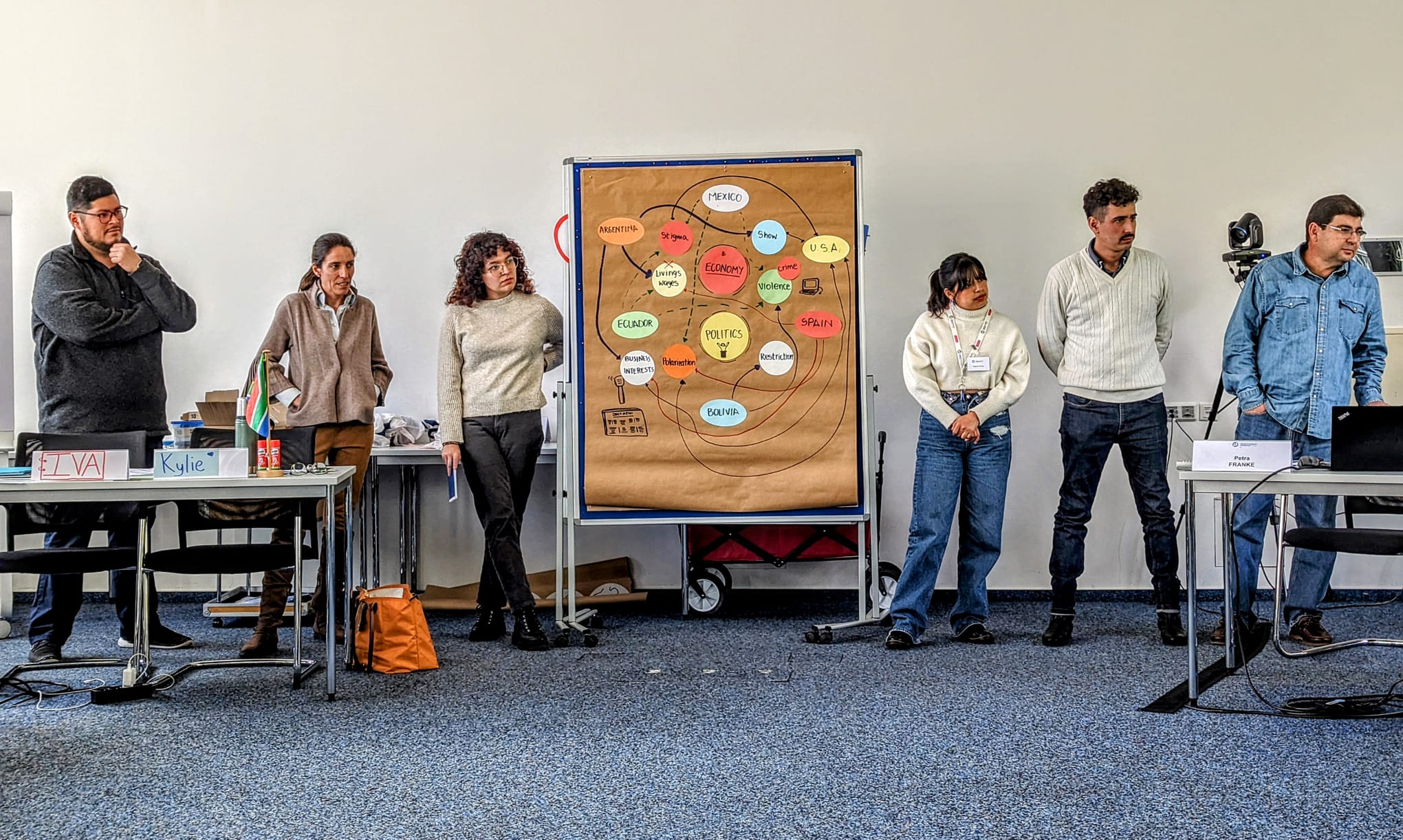Naumann Stories
Fake news and polarization: the storytelling opportunity

In Mexico, 87% of the population consumed false or misleading information in 2022, placing us in third place worldwide, tying with Peru and falling behind the Philippines (89%). According to the Freedom Fights Fake survey conducted by the Foundation in 2020, 47% of people have difficulty distinguishing between real and fake news. Furthermore, according to Statista, 56.4% of people globally are concerned about the veracity of what they consume on the Internet.
In the face of an uncontrollable and seemingly unstoppable production of fake news, the role of journalism in combating it is increasingly crucial. Recently, I had the privilege of participating in the IAF's "Freedom of the Press - Challenges in the Digital Age" seminar, where I was able to learn about the experiences of journalists and communications professionals from 27 different countries. Despite the cultural, political and social differences and the very different problems facing the profession in our countries, there is one thing in common: disinformation.
The fight against fake news has become the great challenge of recent years. Workshops to detect false information, departments in media outlets and even entire projects dedicated solely to fact-checking, initiatives such as Birdwatch (from Twitter, now X). However, has this really been effective?
During the seminar, the question arose as to what is the true role of the journalist in the face of fake news. Is the journalist simply a verifier of information? Has his or her task become one of refuting news instead of seeking it out? Is fact-checking the only alternative? In my opinion, the answer is obvious: no, at least not solely.
Talking about the importance of verifying information and seeking sources was clear from the beginning. The problem does not lie in the lack of journalistic ethics, but in the ability to be more powerful than news that lacks them. Journalism must connect with its audience. Narratives and the ability to tell stories that people want to hear is fundamental to the work of journalism and is, in my opinion, the most powerful tool against misinformation. A story, when well told, is worth a thousand words.
According to a study by USC (University of Southern California), fake news is shared because the structure of digital platforms encourages it. Since these platforms prioritize interaction, comments and "likes" over the type of information, this study concluded that sharing becomes a habit. It's not the lack of digital literacy, it's the behavior that Twitter, Meta or TikTok promote.
Emotions, political biases and polarization in networks are elements that fake news exploits to go viral. They appeal to people, their fears and their beliefs. One of the exercises in the seminar consisted precisely in creating a fake news story: a task that turned out to be quite complicated when asked to a group of journalists who are used to looking for reliable sources and providing truthful information. The fake divorce of a couple due to an alleged infidelity, a radioactive garden in the corner of town or the leak of military data were just some of the ideas that came up and that showed us something important: at the time of building the news, we did not think about whether we had credible data, but about telling the most entertaining story. We measured its success not in its veracity, but in the laughter, applause and reactions that each one got. We became our own meter of "likes", retweets and shares.
We must recognize that the digital scenario brought with it new challenges such as echo chambers, polarization and the rise of hate speech, creating the perfect scenario for fake news. Faced with this scenario, of course fact checking and information verification continue to be essential, not only for journalists but also for users when sharing information. However, this tool alone is limited by removing the human factor from stories and turning journalism into a kind of echo, rather than the first voice.
Faced with this, Professor Dr. Gernot Wolfram, professor of cultural management and cultural studies at Macromedia University, with whom we had the privilege of speaking in Berlin, offered an encouraging perspective not only on the role of storytelling, but also on cross-cultural storytelling as a possible tool to combat this new virus.
I don't think I have the secret recipe for fighting misinformation, nor that there is a single way to do it, but we do need to learn how to do it in a fast-changing digital environment. However, after two weeks of the seminar, of conversations in and out of the auditorium, and of leaving with many more questions than I had at the beginning, one thing became clear to me: a piece of information, no matter how real it is, will not have an impact if it does not speak to the people who are reading it. Disproving, revising and correcting is relevant, as long as the reader feels identified. It is in the path of a well-told story that we will be able to fight against false narratives.
